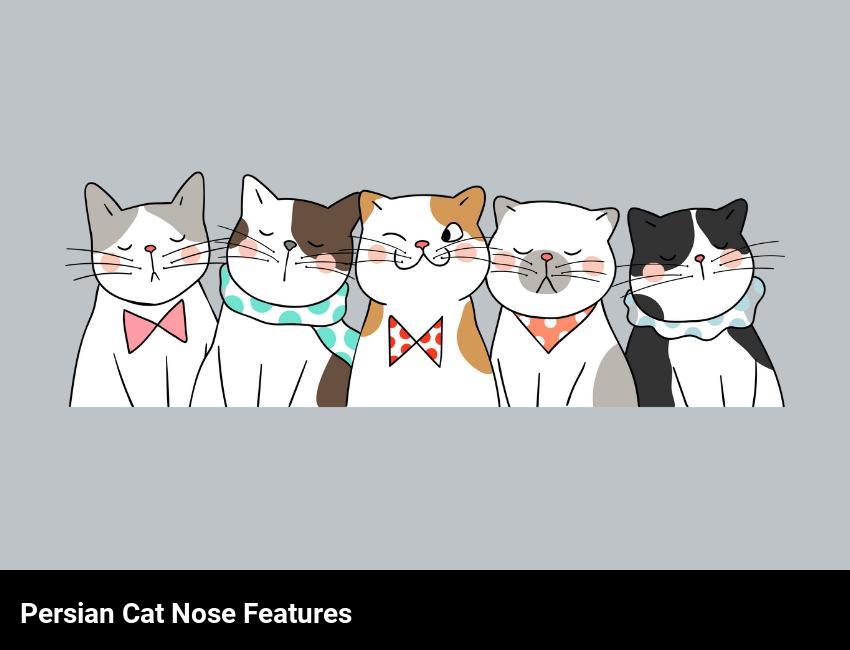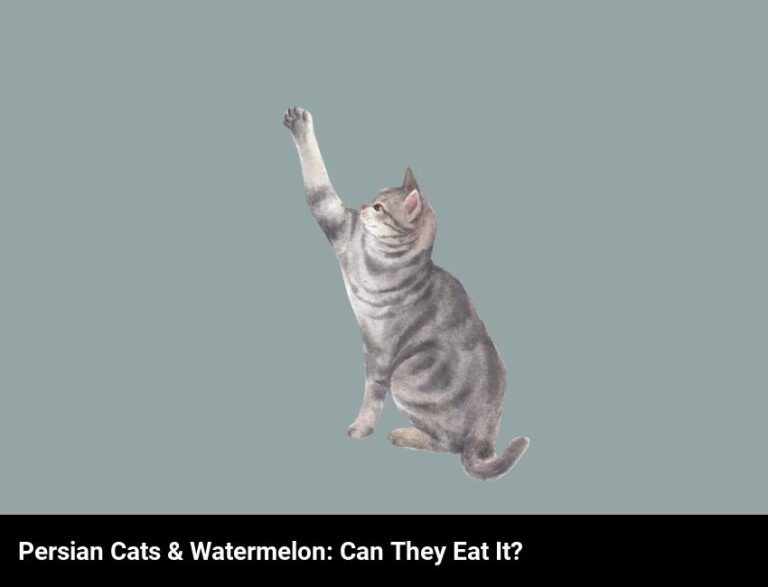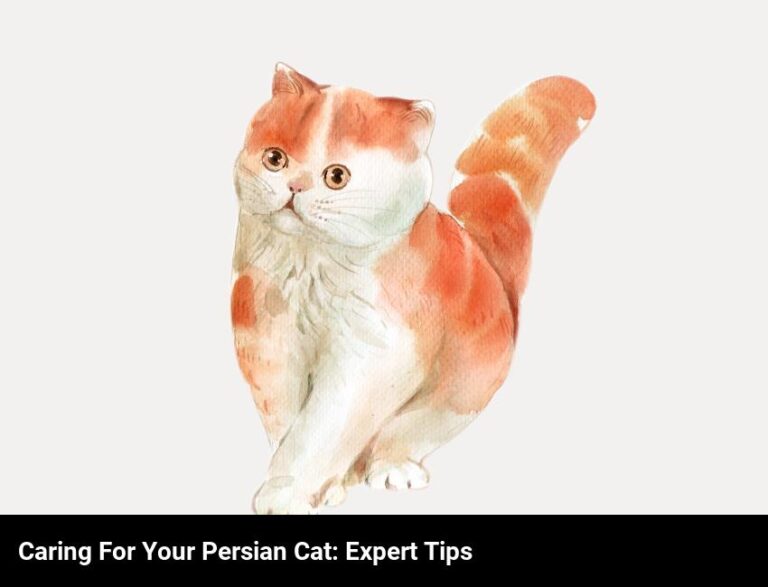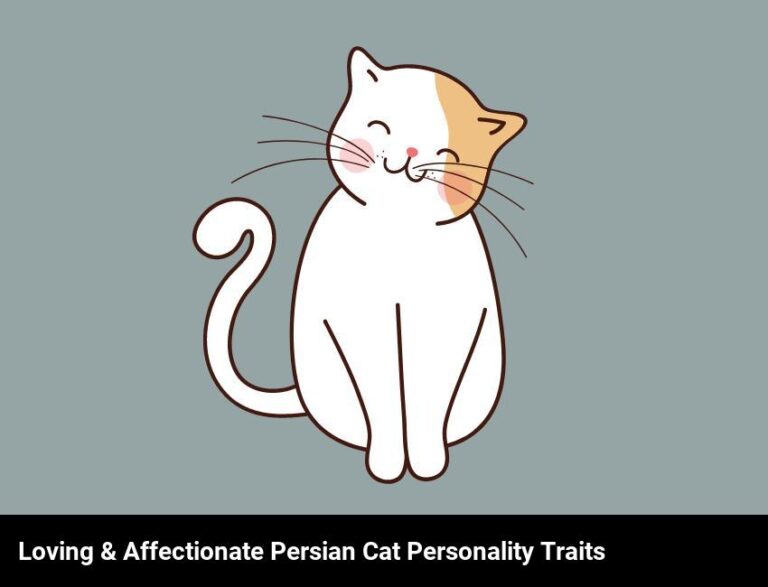The Unique Features Of A Persian Cat’S Nose
Persian cats have a unique nose shape known as a “pug nose”. This short, flat nose gives them a distinctive look, and it’s also known for being highly sensitive to touch. Their noses are also characterized by wide nostrils and a distinct curve at the bridge of their nose.
As an avid cat lover and owner of a Persian cat, I’ve been fascinated by the unique features of their noses. I’m sure many of you who own a Persian cat have noticed the same thing. But what exactly makes a Persian cat’s nose so special? Is there anything more than just its aesthetic appeal?
It turns out, there’s a lot more to a Persian cat’s nose than meets the eye. From the shape to the texture, the nose of a Persian cat is an incredible adaptation that helps them survive in the wild. Not only that, there are also health benefits associated with the unique shape of their noses.
In this blog, I’ll be exploring the physical features that make a Persian cat’s nose so unique, as well as the history behind it. We’ll also be looking at how the shape of a Persian cat’s nose can affect their health, and what type of functions it has. Finally, we’ll take a look at the genetic factors that influence the shape of a Persian cat’s nose.
What physical features make a persian cat’s nose unique?
A Persian cat’s nose is truly unique! One of the most obvious physical features that makes the cat’s nose so special is the distinctive bump on its bridge. This bump is known as a “Roman nose”, and it can be found on many purebred Persian cats. In addition to the bump, Persian cats have shorter snouts than other breeds, giving their noses a unique shape.
Another unique feature of a Persian cat’s nose is its color. The color of a Persian cat’s nose can range from dark brown to pink, and can even have black spots.
Finally, Persian cats have a delicate, velvety texture to their noses, which can make them stand out from the crowd. This velvet texture is a result of the cat’s short, fine fur, which is a common trait among Persian cats.
Overall, Persian cats have some truly beautiful and unique features that make their noses stand out from the crowd. Their Roman noses, unique colors, and velvety texture give them a unique look that is sure to draw attention.
How does a persian cat’s nose help them survive in the wild?
You may be wondering how a Persian cat’s nose helps them survive in the wild? Well, the answer lies in their unique facial features. Persian cats have a distinctive nose that plays a vital role in their success in the wild. Here are some of the ways their nose helps them out:
- Sense of Smell: Persian cats have an incredibly strong sense of smell. This helps them detect prey or predators from a long distance away. This can give them a crucial advantage when it comes to avoiding danger or catching their food.
- Cooling System: Persian cats have a unique network of blood vessels in their noses. This helps them regulate their body temperature and cool down when needed. This is especially helpful in hot climates where other cats may struggle to stay cool.
- Balance and Coordination: Persian cats’ noses are also very sensitive to movement and vibration. This helps them maintain their balance and coordination when they are running or jumping. This allows them to be agile and maneuver quickly in the wild, which is essential for survival.
Overall, Persian cats’ noses are an incredible asset that helps them stay safe and successful in the wild. Whether it’s helping them detect prey, regulate their body temperature, or maintain balance and coordination, their noses play an invaluable role in their success.
Are there any health benefits associated with a persian cat’s nose?
Yes! A Persian cat’s nose certainly has its benefits. Here are just a few of the health benefits associated with this unique feature:
- Persian cats have a higher number of nasal turbinates, which helps to reduce allergens in the air. This can make it easier for people with allergies to breathe better.
- Persian cats’ noses are also thicker than most cats’, which can help keep them warm in cold temperatures. This is especially important if you live in an area with cold winters.
- Persian cats’ noses are also wider than most cats’, which can make it easier for them to smell and taste food. This can make them better at finding food and can even help them to be more picky eaters.
- Finally, Persian cats’ noses are nearly always a different color than the rest of their fur. This can be a great way to spot your pet in a crowd or in low light. It can also make them more visually appealing and can even be used to differentiate between cats.
What type of nose shape do persian cats typically have?
Persian cats typically have a button shaped nose, which has a slight indentation in the middle. This nose shape gives them their distinctive look, and is one of the traits that makes the Persian breed unique.
The shape of the Persian cat’s nose is often referred to as ‘Roman’, which describes the curved shape of the nose. It should also be noted that the Persian breed is one of the oldest and most popular breeds, so it’s no surprise that they have a unique nose shape.
The Persian cat’s nose is also very short and is located at the top of their head, giving them their classic ‘squashed’ look. This makes them look even more distinctive, and is something that many people find very endearing.
The Persian cat’s nose should be slightly round at the tip, and should have no bumps or lumps. It should also be clean, with no discharge or signs of infection. This is especially important for cats who are exposed to the outdoors, as infections can quickly become a problem.
In conclusion, Persian cats typically have a ‘Roman’ button shaped nose, which is slightly round at the tip and has a slight indentation in the middle. This nose shape is one of the traits that makes the Persian breed unique, and is something that many people find very endearing.
How can you tell a persian cat’s nose apart from other cats?
If you’re looking to distinguish a Persian cat’s nose from other cats, there are some key characteristics you should look out for. First, Persian cats have a short, flat face that makes their nose look more prominent. Secondly, the tip of a Persian cat’s nose is usually distinctively spade-shaped and round. This can be a helpful feature to look out for when trying to identify a Persian cat. Lastly, Persian cats usually have a black or pink nose, although some can have a nose of both colors.
When you’re looking to identify a Persian cat’s nose, it’s important to remember that although there are some key characteristics, there is still some variation among Persian cats. Some cats might have noses that are more pointed than others, while some cats might have noses that are more flat. No two cats are exactly alike!
The next time you see a Persian cat, take a close look at its nose and look for these distinguishing features. Remember, Persian cats have short, flat faces, spade-shaped and round noses, and noses that are typically black or pink in color. These key characteristics will help you tell a Persian cat’s nose apart from other cats.
Are there any genetic factors that affect a persian cat’s nose shape?
Yes! Genetics are the primary factor when it comes to the unique shape of a Persian cat’s nose. Persian cats have a distinctive flattened nose with wide nostrils, known as a brachycephalic nose. This is due to the presence of a gene called brachycephalic syndrome. This gene is responsible for the shortening of the facial bones of a Persian cat, making their nose appear shorter and flatter than that of other cats.
So, what does this mean for the Persian cat? Well, this gene is the reason why Persian cats have the unique nose shape that makes them so recognizable. This gene also affects the shape of their eyes, ears, and jaw, making them look different from other breeds of cats.
However, it is important to note that other factors can influence the shape of a Persian cat’s nose, such as environmental factors and health conditions. For example, if a Persian cat is exposed to extreme temperatures, it can cause their nose to become dry, cracked, or scaly. Additionally, if a Persian cat has an underlying health condition, such as a respiratory infection, it can cause their nose to become swollen, inflamed, and tender.
In conclusion, genetics are the primary factor when it comes to the shape of a Persian cat’s nose. However, environmental and health factors can also play a role in altering the shape of their nose. If you are considering getting a Persian cat, be sure to take into account all of these factors when choosing the perfect kitty for your family.
Does a persian cat’s nose have any special functions?
Yes! A Persian cat’s nose has a few special functions. For one, it helps the cat to detect scents in the environment, allowing them to identify and explore the world around them. Persian cats also have an acute sense of taste, which is largely due to their noses. With their sense of smell, Persian cats can distinguish between different tastes, such as sweet or sour.
Persian cats also use their noses to communicate with other cats. They will rub their noses against another cat as a sign of affection and to mark their territory. Persian cats will also use their noses to show their dominance and get the attention of other cats.
Finally, Persian cats use their noses to cool themselves off. They do this by breathing in cool air and then exhaling it to create a cooling effect. This is a great way for Persian cats to regulate their body temperature, especially in warm climates.
So, as we can see, Persian cats’ noses have some unique functions. They use their noses to explore the world, communicate with other cats, and regulate their body temperature. These functions make Persian cats more unique and special compared to other cats.
What is the history behind the unique nose of a persian cat?
Persian cats are known for their unique, flat noses and distinctive facial features. But where did this unique nose come from? Well, it’s actually the result of a genetic mutation that dates back centuries!
The mutation first appeared in the 1800s in a litter of cats born in Iran. The cats had shorter noses and rounder eyes than their predecessors. This was the first time this type of mutation occurred in cats.
As the cats were bred and passed down through generations, the mutation became more and more pronounced. Over time, the characteristic of the flat nose and round eyes became increasingly common in Persian cats.
In the 1920s, the Persian cat was introduced to the United States, where it quickly became a popular breed. Since then, it has become one of the most beloved cat breeds in the world, thanks in part to its unique nose.

Frequently Asked Questions
What does the unique shape of a persian cat’s nose make it better suited for?
The unique shape of a Persian cat’s nose makes it better suited for breathing efficiently. Its flat face and short muzzle allow for more air to be drawn in with each breath, reducing the strain of inhaling and exhaling. The muzzle also reduces the risk of respiratory issues such as congestion and asthma. The small nostrils of the Persian cat’s nose are designed to trap dust and other allergens, providing an extra layer of protection against potential respiratory problems.
What do persian cats use their noses for besides smelling?
Persian cats use their noses for a lot more than just smelling! They use their noses to feel around and explore their environment. Persian cats also use their noses to show affection and to communicate with other cats and humans. They may rub their noses against people to show that they’re happy. Persian cats are also very sensitive to odors and can detect subtle changes in their environment.
What is the evolutionary purpose of a persian cat’s unique nose shape?
The unique shape of a Persian cat’s nose is believed to be an evolutionary adaptation that helps them to breathe more easily. This breed’s short muzzle and flattened nose allows them to take in more air, which is essential to its overall health. Additionally, the facial structure helps to filter out dust and other particles from the air the cat breathes in.







